By: Juliann Schamel, Arctic Fox Centre, Sudavik, Westfjords, Iceland
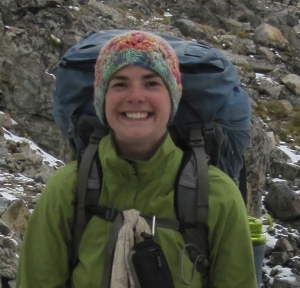
The Arctic Fox Research Centre, located in Sudavik, Westfjords, Iceland, opened in September of 2007 to conduct primary research on the arctic fox (Vulpes lagopus) and to inform and develop sustainable tourism practices for visiting and viewing the arctic fox in Iceland's national parks and preserves. Research at the Centre is supported by University Centre of the Westfjords, the Icelandic Institute of Natural History, and the Nordic project The Wild North.
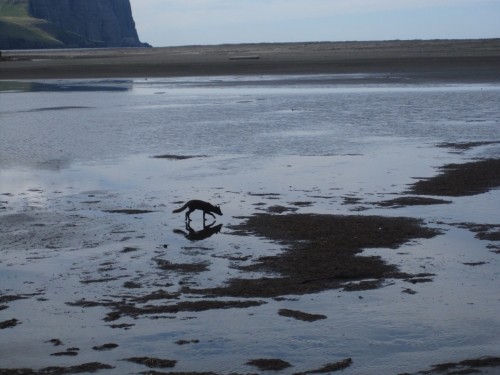
The arctic fox is Iceland's only native terrestrial mammal. These fox are sustained mainly on seabirds and seabird eggs, insects, berries, and on beach carrion during the winter (see Figure 1). Fox have been hunted in Iceland since the first humans arrived 1,100 years ago. Hunted for fur and for sport, the fox are also are seen as a threat to livestock and eider farms and as competition for the seabirds and seabird eggs that were an important traditional food source for Icelanders. In 1295 hunters were hired to kill foxes in proportion to the number of sheep being farmed and government payment for fox corpses has continued in some form since then.
Legislation passed in 1994 provided conservation status to the arctic fox in some national parks and nature preserves on the island. The Hornstrandir Peninsula Preserve is both large enough and remote enough to provide protection to a viable arctic fox population. Nature tourism in Hornstrandir, with fox encounters as the main event, is growing in popularity and new generations of foxes in the nature preserve are losing their fear of humans (see Figure 2).
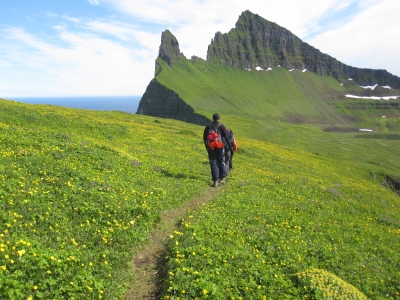
Centre Director Ester Rut Unnsteinsdottir is investigating how fox productivity and behavior are affected by increased tourism and the additional presence of dogs brought onshore. Since 2009 she has lead groups of volunteer research assistants to record the behavior of foxes in the presence of humans. Each volunteer works six-hour shifts for five days each month and is responsible for recording data at one den site. This long-term monitoring project records the annual population, density, den use, and productivity (i.e., number of pups) of foxes in the preserve as well as the effect of tourism (human presence) on the behavior of denning foxes (see Figure 3). The study revealed a relatively stable social system with pairs returning to den in the same territory for up to five consecutive years. However, some pairs demonstrated stress behaviors such as moving farther up the cliff sides to dens inaccessible to humans with the males guarding the den and the females remaining underground for long hours. Volunteers observed that both parents visited the den with food less frequently later in the summer than they had earlier in the same summer and less frequently than they had at the same time in previous summers. From results thus far Unnsteinsdottir believes that human presence is having a negative effect on denning success as foxes spend less time caring for and feeding their pups and more time guarding or avoiding the den. She has recommended to local tourism companies that they reduce the time of individual encounters with foxes and restrict dogs in the preserve.
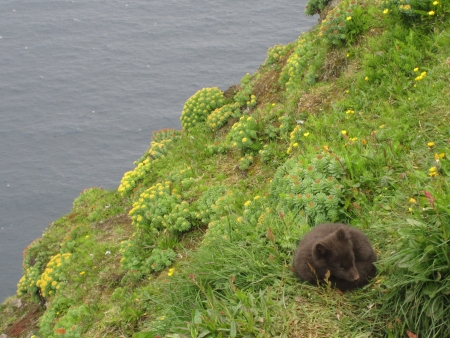
The Centre also works with Icelandic hunters. Since 1958 the Icelandic government has collected and registered hunting data on the arctic fox, providing a long-term database. Hunters have donated over 10,000 fox carcasses from hunting or trapping activities since 1979. Work with the carcass collection and dissections has allowed researchers at the Centre to collect information about fox distribution, size, color morph, condition (i.e., fat reserves), sex, age, diet, and fertility (e.g., number of placental scars or pups). This information indicates that most of the fox shot in Iceland, including the breeders, are one year old or younger and that fertility is low. Breeding during the first year is an indication of a stressed population struggling to reach carrying capacity.
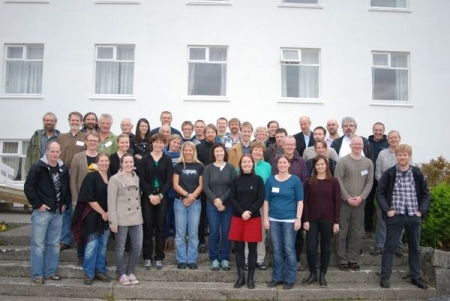
A recent review by the International Union for the Conservation of Nature suggests that many factors related to climate change will threaten the arctic fox species worldwide. These factors include decreased habitat as the tree line moves north, severe changes in prey abundance with fluctuations in lemming populations, and associated competition by the larger red fox. Iceland, which is largely tree-free and has neither a population that relies on lemmings nor a red fox population, offers a unique environment for the arctic fox population. The Arctic Fox Centre provides a platform for scientists, hunters, tourists, and policy makers to collaborate in efforts to shape the future for the species in Iceland.
For further information on the Arctic Fox Research Centre, see their website, or contact Ester Rut Unnsteinsdottir (melrakki [at] melrakki.is).
